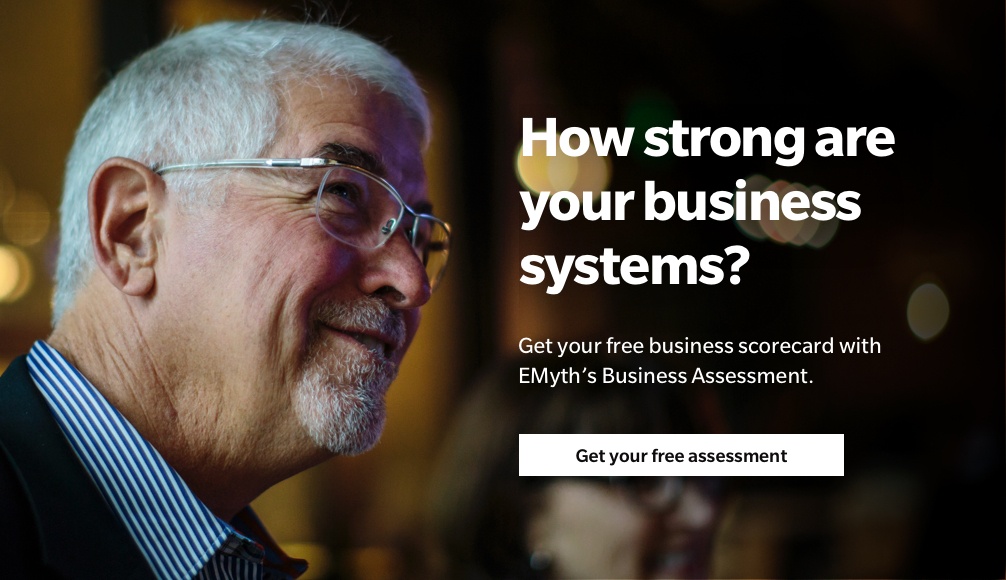If you own a business and have employees, it’s easy to understand why systematizing your business puts you at a great advantage. You know how you want things done. You know how things should work. You know the way you want your prospects and customers to be treated. But your ideal is just a series of pictures in your head unless you do the work of translating it into reality. And that can go one of two ways: Either you do everything yourself—which is exhausting, if not impossible—or you provide your people with a systematic way of producing results.
Good systems—systems that define the way we do it here—are only half of the equation. The people you hire make up the other half. To make it possible for your systems to free you and to replace your personal ability to produce results, you need people who value what you value; who care more about doing things effectively than doing things their way; who have good judgment and the capacity to grow; who want to leave things in a better place than they found them. For systems to really work in a business, they have to work together with the people who use them. At EMyth, we call this relationship between people and systems “the balance between structure and substance.”
Structure is every predetermined element of a system. It’s the step-by-step process you build to produce consistent, predictable results. It’s your logo, your brand promise, your sales scripts, the look and feel of your employee handbook, your invoices, your waiting room. Every structural element of your business needs to be part of a larger strategy that’s intentional—it should communicate a specific message to your consumer that matters to you as well as to them. For example, if you’re a plumbing contractor or own a legal firm, your systems would be designed to communicate, “We understand your frustration about X and we’ll eliminate it for you!” If you own a car dealership or a cosmetic surgery practice, your systems would say, “We know you’re dreaming of Y and we’ll make it happen for you!”
Substance is what your team brings to your systems. The spirit, attitudes, skills and experience of your employees bring your business systems to life. Without the substance of people, your sales scripts will sound canned, your customer service requests will leave your customers feeling unheard, and the messages left on your after-hours voice machine will be responded to in an officious or insensitive way. Structure can only do so much. Something very special happens in a business when its leader takes care not only to put thoughtful and effective systems in place, but to also ensure that their people are leveraging them to their greatest benefit. A system that works needs to be worked.
To extract the best of both your systems and your people, here are some things to think about:
1. 1+1=3
Structure without substance is sterile. We’ve all experienced how quickly we lose interest when a telemarketer sounds wooden, like they’re reading from a script. At the same time, substance without structure is chaos. It’s exasperating to see members of a team each perform a task in a different way with different results in the absence of a system. When combined, structure and substance produce results that are greater than the sum of the parts.
2. Structure supports creativity
Contrary to conventional wisdom, structure establishes boundaries that give your team a defined space to express themselves and cultivate their strengths. To an artist, structure is the container of creativity. An artist doesn’t just wake up in the morning and decide whether or not they’re going to paint a watercolor or sculpt marble that day. Their medium is their structure. And by removing infinite options, this structure marshals creative energy and attention. Systems serve the same purpose for people in a business.
3. A culture that values structure attracts employees who do too
In my experience, everyone needs structure. Some people want to create structure on their own terms, while others want to align with a structure that’s already been (at least to some degree) constructed and proven to work. Consider your team. How invested are they in your systems? How is your attitude about systems impacting theirs? If you build systems that really work, systems that you’re passionate about, they’ll feel it. Let them. Orient your hiring process so you prioritize people who will take your systems to heart.
4. Your team should embody your systems, not just follow them
An employee has to embody a system—take it on as their own—to discover the subtleties of why it works and how to leverage it to their advantage. The employee who stands on the outside and judges will never discover a system’s true value. If you’ve created systems that really work, born of your experience producing results, then you should expect your people to fully dedicate themselves to them. They’ll feel inspired to follow the step-by-step processes you’ve created, the scripts you’ve developed, the standards and guidelines you’ve established, rather than simply going through the motions. Make your case to your team about why your way works, but also be willing, as the leader of your company, to make your way non-negotiable. Your business and your employees will feel served in the end.
Striking the right balance between structure and substance, in every corner of your business, can enhance its vitality in ways that can only be discovered. Your team will feel the connection, and so will your customers. Bringing together the right team of people who can truly embody your way we do it here could feel like a beautiful dance.




Comments